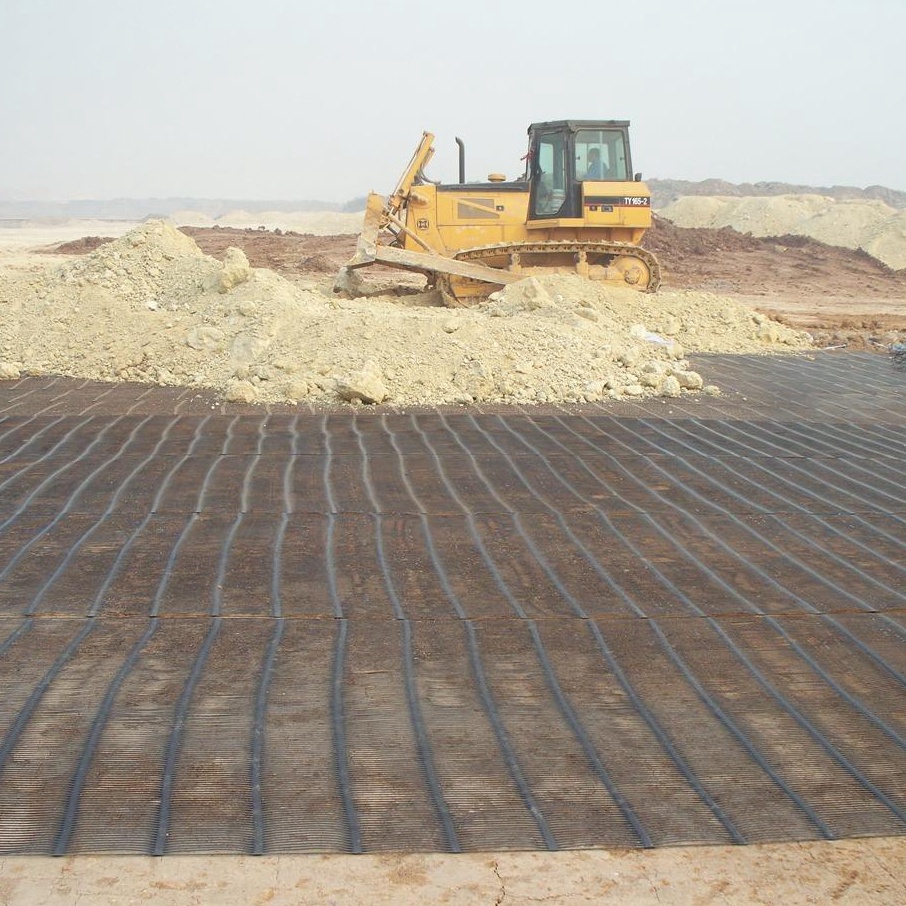A uniaxial geogrid is a geosynthetic material consisting of a grid structure with reinforcing ribs primarily oriented in one direction. The term “uniaxial” refers to the fact that the reinforcing elements (ribs or strands) are predominantly aligned in a single direction. This design imparts the geogrid with enhanced strength and stiffness in that specific direction.
Here are some key characteristics and applications of uniaxial geogrids:
- Grid Structure: Uniaxial geogrids typically have a grid-like structure with open spaces between the ribs. The grid may be made of materials such as high-density polyethylene (HDPE) or polyester.
- Reinforcement: The primary function of uniaxial geogrids is to provide reinforcement to soil or other construction materials. The reinforcing ribs are designed to resist tension forces, making them particularly effective in enhancing the tensile strength of the soil.
- Orientation: The reinforcing ribs in a uniaxial geogrid are oriented predominantly in one direction, which is typically along the length of the roll. This orientation is chosen based on the specific requirements of the engineering application.
- Soil Reinforcement: Uniaxial geogrids are commonly used for soil reinforcement applications, such as in the construction of retaining walls, steep slopes, embankments, and foundations. They help to prevent soil erosion and provide stability to these structures.
- Road Construction: Uniaxial geogrids are often used in road construction to improve the performance of paved and unpaved roads. They can be incorporated into the base or subbase layers to enhance the load-bearing capacity and reduce rutting and deformation.
- Installation: Geogrids are typically laid within the soil or aggregate layers during construction. The interaction between the soil and the geogrid helps to distribute loads and reinforce the overall structure.
- Compatibility with Various Soils: Uniaxial geogrids can be used in a variety of soil types, and their effectiveness is influenced by factors such as soil type, compaction, and the specific characteristics of the geogrid itself.
- High Tensile Strength: Uniaxial geogrids are designed to have high tensile strength, allowing them to withstand significant forces without undergoing deformation or failure.

It’s important to follow manufacturer guidelines and engineering specifications when selecting and installing uniaxial geogrids to ensure optimal performance for a given application. Additionally, the design and installation of geogrids should be carried out by qualified engineers with expertise in geotechnical engineering and soil mechanics.
